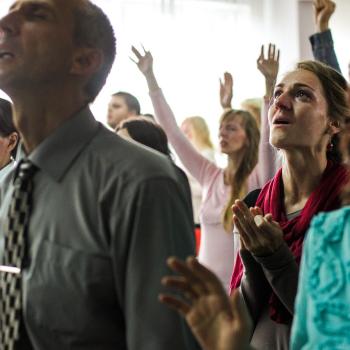By Talia Davis
 The parsha (weekly Torah portion) for this week is Haazinu. Haazinu means "ones standing and is the second word (but first distinctive words) in the portion. Be sure to check out the video at the end of this article.
The parsha (weekly Torah portion) for this week is Haazinu. Haazinu means "ones standing and is the second word (but first distinctive words) in the portion. Be sure to check out the video at the end of this article.
This parsha is written in the Torah as a poem; it is laid out differently than the rest of the scroll. It is truly Moses' swan song to the people he led out of Egypt and through the desert.
This is the second time Moses has sung with/to the people Israel. The first time was after the Sea of Reeds closed and the Israelites were safe from the Egyptians; then he sang the Song of the Sea. This was just prior to receiving the Torah and the covenant at Mt. Sinai. Here, the Israelites have just signed the covenant with G-d and Moses is singing again, at the end of their journey. This song contains the Israelites' sins as well as the prophecy of their future punishment, followed closely by their eventual redemption and reward. Moses reminds us that G-d is perfect in every way while we, the Israelites of the desert generation were complainers and whiners and generally unworthy. And despite all of that, G-d still wants us as his people.

Even so, G-d knew we wouldn't listen, so G-d tells us, through Moses, about the future of our situation. If we choose the path that is not G-d's we will suffer famine, plague, and pestilence. However, G-d would never destroy us as a people because we are G-d's family.
Finally, when Moses finished this poem, with Joshua at his side, he knew it was time. Moses reminds the people one last time that this is no small matter. We were to take his warnings to heart and heed them, not only in this generation but also for our children. Then G-d told Moses that it was time. Moses, at the age of 120, climbed Mount Nebo and looked out of over the land of Canaan/Israel. Looking at the place he would never enter, he died there, just as his brother Aaron had on Mount Hor. They sealed this fate for themselves when they didn't trust in G-d and rather hit the rock to get water instead of following G-d's directions to speak to it in the wilderness near Zin.
And that closes this week's parsha. In the Jewish tradition, we believe that visiting the graves of righteous people is very important and auspicious. Rachel's tomb is a popular site among women in Jerusalem. As are the tombs of our forefathers, though most are located in Arab controlled areas and difficult to access. So why are there not any "Visit Moses' Grave" tours south of the Jordan? The truth is, we do not know where he is buried and that is not just poor bookkeeping. G-d ensured that no one would know exactly where Moses was buried for fear that people might choose to worship him or hold him up as a saint-like character, which was not what G-d wanted for us (and which can lead to idol worship). Therefore, no one really knows where he is buried on or around Mt. Nebo. There was a story that the people who lived at the bottom of the mountain saw his grave at the top and the people who lived at the top of the mountain always saw his grave at the bottom.
And that leaves us with a bit of mystery. Enjoy G-dcast's rendition of Moses' song.
Parshat Ha'azinu from G-dcast.com
More Torah cartoons at www.g-dcast.com
9/7/2010 4:00:00 AM





